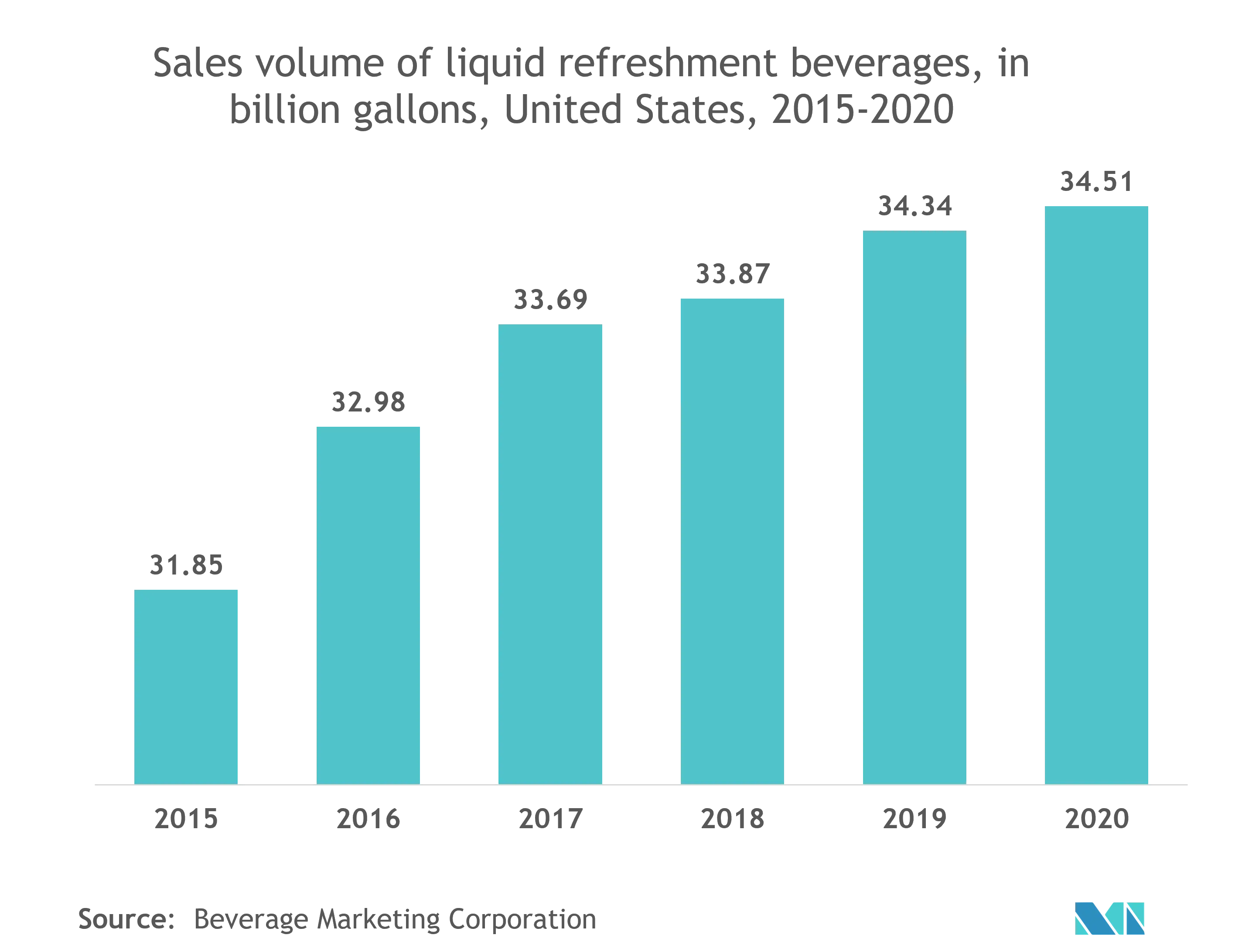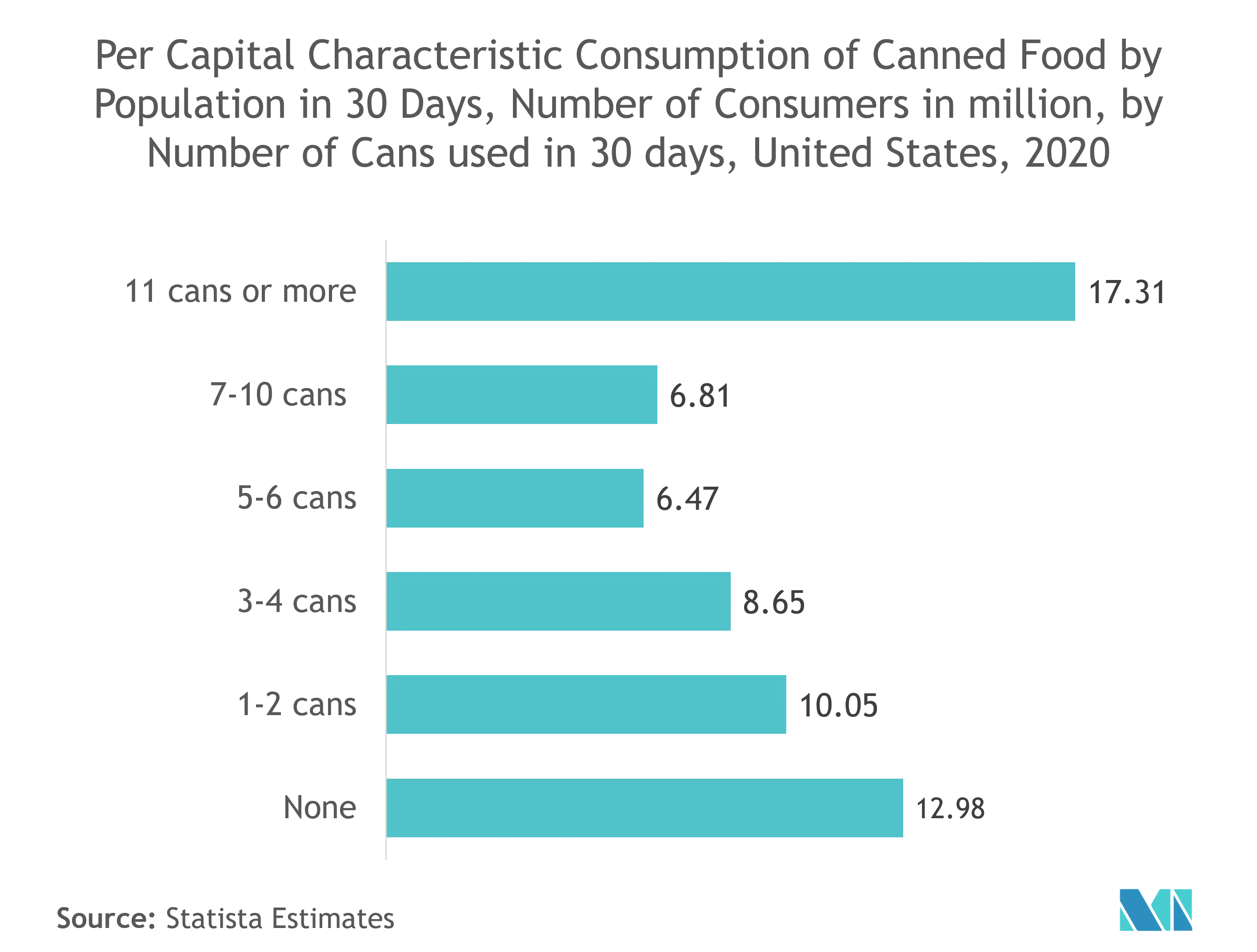Market Trends of North America Metal Cans Industry
This section covers the major market trends shaping the North America Metal Cans Market according to our research experts:
Beverage is Expected to Account For Significant Market Share
- Metal cans are most widely used for beverages. The most notable trend of canned wine, cocktails, hard drinks, and soft drinks is packaged in metal, driven by the need for portability in North America. The usage of metal cans in the beverage industry can be widely classified into alcoholic drinks and non-alcoholic drinks based on the nature of the beverage. Alcoholic beverages, such as beer, have historically used metal cans, while other kinds of liquor, like wine, traditionally served in glass bottles, are increasingly adopting metal cans.
- Moreover, beverage can manufacturers have reduced the weight by reducing the gauge required to fabricate the cans. Metal cans can support the carbonation pressure that is needed to package soda. Metal cans also resist forces up to 90 pounds per square inch. This factor makes the cans the favored choice for packaging in the beverage industry.
- Metal can manufacturers are increasing the production capacity in North America to address the supply chain disruption faced due to the shortage in metal cans. The President of the Ball Corporation has identified the demand to outstrip the supply until 2023. The aggressive demand and growth of metal cans in the beverage industry sparked multiple investments in the sector in the studied region.
- For instance, in September 2021, Packaging company Ball Corporation announced an investment of USD 290 million over the course of multiple years into a new aluminum beverage packaging plant in Las Vegas. The plant is expected to create a range of can sizes. The facility is scheduled to begin production in late 2022 and will create 180 manufacturing jobs when it is fully operational.
- Further, Ardagh Group announced in October 2020 that the two new high-speed beverages could manufacture lines in its production facility in Mississippi. The company announced that the investment is aimed to cater to the production of its patented sleek design line for various beverages, including hard seltzers, beer, energy drinks, and tea.

United States Accounts for the Largest Share
- Many companies in the market are adding new lines to existing plants and are making productivity enhancements because of the can shortage issues due to the pandemic. For instance, in September 2020, Ball Corporation announced that it would open an aluminum beverage packaging plant in Pittston, Pennsylvania, by mid-2021 to serve the North American market as the at-home consumption grows due to the pandemic. The company initially planned a 6 billion can output expansion by 2021. Ball Corporation is looking forward to opening two new plants and adding two production lines to the United States facilities by the end of 2021.
- Many restaurants and bars were closed with the pandemic, due to which canned alcoholic beverages witnessed a significant increase in sales. Also, many beverage manufacturers shifted their products into cans, which has put a strain on the aluminum can supply chain. To cater to the demand for cans, many manufacturers have been opening facilities to meet this ever-growing demand.
- For instance, in January 2021, Crown Holdings invested in the two new beverage can plant in Henry Country, Virginia, and Minas Gerais State, Southeast Brazil. The plant in Virginia will be supplying beverage cans to serve various categories, including sparkling water, energy drinks, carbonated soft drinks, tea, functional beverages, hard seltzers, beer, and cocktails. The company expands its North American supply network with the plant to address the growing standard and specialty beverage cans market.
- Additionally, in April 2021, Crown Holding unveiled its plan to build its third new beverage can production facility in the United States. The plant will produce cans for sparkling waters, energy drinks, carbonated soft drinks, functional beverages, beers, among other beverages.
- Can Manufacturers Institute (CMI) beverage can manufacturer and aluminum can sheet producer members are committing to achieving ambitious U.S. recycling rate targets, including a 70% recycling rate by 2030. These new targets will improve the circularity of the aluminum beverage can while demonstrating to beverage companies and consumers the industry’s dedication to ensuring the aluminum beverage can remain the most sustainable package on the market.


